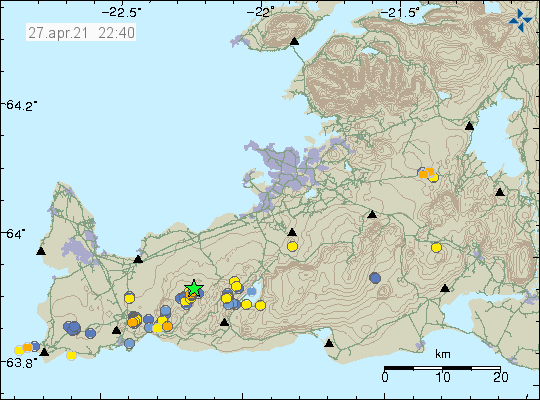This is a short update on the eruption in Fagradalsfjall mountain on 30-April-2021.
There has not been any major changes since last update. This are the noticeable changes since last update in the eruption in Krýsuvík-Trölladyngja volcano system.
- Just one crater is now erupting. All other craters have stopped erupting but for now some of them might contain lava lake for now that might be creating a flow in lava tubes under the surface in the lava field. This process might not be visible on the surface.
- A lot of activity now is in form of high lava arcs (correct word?) are now being formed in the one crater because of increased gas content of the lava.
- Lava fields are slowly filling up all nearby valleys that it is flowing into. This is a slow process and is going to take months.
- There are no signs the eruption is about to end.
No other updates have been reported so far. Rúv has installed a new web camera to give better view of the eruption. That camera can be found on YouTube Rúv channel.
Vacation
I am going on a small vacation between 5th May and 10th May. That means next update about the eruption is going to be on 14th May. I don’t know if I can go to the eruption yet as that depends on the weather and the weather is always unstable in Iceland.



